Related Research Articles
American folklore encompasses the folklores that have evolved in the present-day United States since Europeans arrived in the 16th century. While it contains much in the way of Native American tradition, it is not wholly identical to the tribal beliefs of any community of native people.

Folklore is the whole of oral traditions shared by a particular group of people, culture or subculture. This includes tales, myths, legends, proverbs, poems, jokes, and other oral traditions. They include material culture, such as traditional building styles common to the group. Folklore also includes customary lore, taking actions for folk beliefs, and the forms and rituals of celebrations such as Christmas, weddings, folk dances, and initiation rites. Each one of these, either singly or in combination, is considered a folklore artifact or traditional cultural expression. Just as essential as the form, folklore also encompasses the transmission of these artifacts from one region to another or from one generation to the next. Folklore is not something one can typically gain from a formal school curriculum or study in the fine arts. Instead, these traditions are passed along informally from one individual to another, either through verbal instruction or demonstration. The academic study of folklore is called folklore studies or folkloristics, and it can be explored at the undergraduate, graduate, and Ph.D. levels.

A joke is a display of humour in which words are used within a specific and well-defined narrative structure to make people laugh and is usually not meant to be interpreted literally. It usually takes the form of a story, often with dialogue, and ends in a punch line, whereby the humorous element of the story is revealed; this can be done using a pun or other type of word play, irony or sarcasm, logical incompatibility, hyperbole, or other means. Linguist Robert Hetzron offers the definition:
A joke is a short humorous piece of oral literature in which the funniness culminates in the final sentence, called the punchline… In fact, the main condition is that the tension should reach its highest level at the very end. No continuation relieving the tension should be added. As for its being "oral," it is true that jokes may appear printed, but when further transferred, there is no obligation to reproduce the text verbatim, as in the case of poetry.
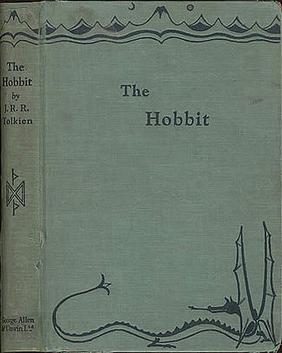
The Hobbit, or There and Back Again is a children's fantasy novel by English author J. R. R. Tolkien. It was published in 1937 to wide critical acclaim, being nominated for the Carnegie Medal and awarded a prize from the New York Herald Tribune for best juvenile fiction. The book is recognized as a classic in children's literature, and is one of the best-selling books of all time with over 100 million copies sold.

A fairy tale is a short story that belongs to the folklore genre. Such stories typically feature magic, enchantments, and mythical or fanciful beings. In most cultures, there is no clear line separating myth from folk or fairy tale; all these together form the literature of preliterate societies. Fairy tales may be distinguished from other folk narratives such as legends and explicit moral tales, including beast fables. Prevalent elements include dwarfs, dragons, elves, fairies, giants, gnomes, goblins, griffins, mermaids, talking animals, trolls, unicorns, monsters, witches, wizards, magic, and enchantments.
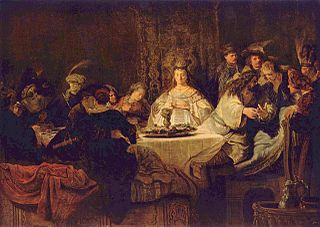
A riddle is a statement, question or phrase having a double or veiled meaning, put forth as a puzzle to be solved. Riddles are of two types: enigmas, which are problems generally expressed in metaphorical or allegorical language that require ingenuity and careful thinking for their solution, and conundra, which are questions relying for their effects on punning in either the question or the answer.

English folklore consists of the myths and legends of England, including the English region's mythical creatures, traditional recipes, urban legends, proverbs, superstitions, and folktales. Its cultural history is rooted in Celtic, Christian, Nordic and Germanic folklore.
The folklore of India encompasses the folklore of the nation of India and the Indian subcontinent. India is an ethnically and religiously diverse country. Given this diversity, it is difficult to generalize the vast folklore of India as a unit.
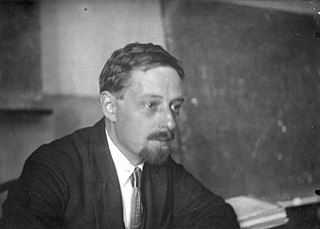
Vladimir Yakovlevich Propp was a Soviet folklorist and scholar who analysed the basic structural elements of Russian folk tales to identify their simplest irreducible structural units.
Gestumblindi is a personal name appearing in two medieval Scandinavian legendary texts: Hervarar saga ok Heiðreks and in Saxo Grammaticus' Gesta Danorum. A figure of this name also appears in several later Scandinavian folk tales as Gest Blinde.
The Aarne–Thompson–Uther Index is a catalogue of folktale types used in folklore studies. The ATU Index is the product of a series of revisions and expansions by an international group of scholars: originally composed in German by Finnish folklorist Antti Aarne (1910), the index was translated into English, revised, and expanded by American folklorist Stith Thompson, and later further revised and expanded by German folklorist Hans-Jörg Uther (2004). The ATU Index, along with Thompson's Motif-Index of Folk-Literature (1932)—with which it is used in tandem—is an essential tool for folklorists.
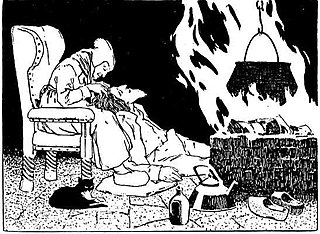
"The Devil with the Three Golden Hairs" is a German fairy tale collected by the Brothers Grimm. It falls under Aarne–Thompson classification types 461, and 930.

The Judgement of Solomon is a story from the Hebrew Bible in which Solomon ruled between two women who both claimed to be the mother of a child. Solomon ordered the baby be cut in half, with each woman to receive one half. The first woman accepted the compromise as fair, but the second begged Solomon to give the baby to her rival, preferring the baby to live, even without her. Solomon ordered the baby given to the second woman, as her love was selfless, as opposed to the first woman's selfish disregard for the baby's actual well-being. Some consider this approach to justice an archetypal example of an impartial judge displaying wisdom in making a ruling.
African-American folktales are the storytelling and oral history of enslaved African Americans during the 1700-1900s. These stories reveal life lessons, spiritual teachings, and cultural knowledge and wisdom for the African-American community which became part of their cultural heritage. During slavery, African-Americans created folk stories that spoke about the hardships of slavery and created folk spirits and heroes that were able to outwit and outsmart their slaveholders and defeat their enemies. These folk stories gave hope to enslaved people that folk spirits will liberate them from slavery. Many folktales are unique to African-American culture, while others are influenced by African, European, and Native American tales.

Grateful dead is both a motif and a group of related folktales present in many cultures throughout the world.
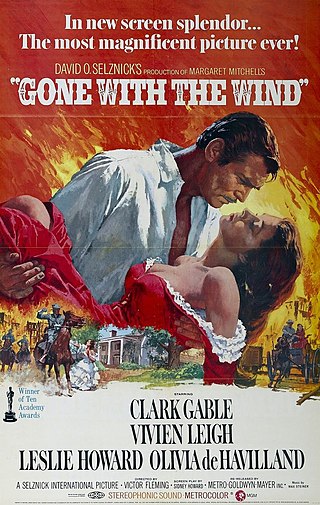
In film and television, drama is a category or genre of narrative fiction intended to be more serious than humorous in tone. The drama of this kind is usually qualified with additional terms that specify its particular super-genre, macro-genre, or micro-genre, such as soap opera, police crime drama, political drama, legal drama, historical drama, domestic drama, teen drama, and comedy-drama (dramedy). These terms tend to indicate a particular setting or subject matter, or they combine a drama's otherwise serious tone with elements that encourage a broader range of moods. To these ends, a primary element in a drama is the occurrence of conflict—emotional, social, or otherwise—and its resolution in the course of the storyline.

Invented traditions are cultural practices that are presented or perceived as traditional, arising from the people starting in the distant past, but which in fact are relatively recent and often even consciously invented by identifiable historical actors. The concept was highlighted in the 1983 book The Invention of Tradition, edited by Eric Hobsbawm and Terence Ranger. Hobsbawm's introduction argues that many "traditions" which "appear or claim to be old are often quite recent in origin and sometimes invented." This "invention" is distinguished from "starting" or "initiating" a tradition that does not then claim to be old. The phenomenon is particularly clear in the modern development of the nation and of nationalism, creating a national identity promoting national unity, and legitimising certain institutions or cultural practices.
Riddle-tales are traditional stories featuring riddle-contests. They frequently provide the context for the preservation of ancient riddles for posterity, and as such have both been studied as a narrative form in their own right, and for the riddles they contain. Such contests are a subset of wisdom contests more generally. They tend to fall into two groups: testing the wisdom of a king or other aristocrat; and testing the suitability of a suitor. Correspondingly, the Aarne–Thompson classification systems catalogue two main folktale-types including riddle-contests: AT 927, Outriddling the Judge, and AT 851, The Princess Who Can Not Solve the Riddle. Such stories invariably include answers to the riddles posed: 'the audience cannot be left dangling'.
The poetry in The Lord of the Rings consists of the poems and songs written by J. R. R. Tolkien, interspersed with the prose of his high fantasy novel of Middle-earth, The Lord of the Rings. The book contains over 60 pieces of verse of many kinds; some poems related to the book were published separately. Seven of Tolkien's songs, all but one from The Lord of the Rings, were made into a song-cycle, The Road Goes Ever On, set to music by Donald Swann. All the poems in The Lord of the Rings were set to music and published on CDs by The Tolkien Ensemble.
The riddles of Hervarar saga ok Heiðreks, also known as Gátur Gestumblinda, Heiðreks gátur and Heiðreksmál, are a group of around thirty-seven Old Icelandic verse riddles that constitute the main evidence for medieval Scandinavian riddling. They appear in Hervarar saga ok Heiðreks as part of a riddle-contest in which the god Óðinn, disguised as a man called Gestumblindi, propounds riddles to the saga's protagonist, Heiðrekr. In the estimation of Jeffrey Scott Love in 2013, they 'have received more scholarly attention than any other passage in the text'.
References
- ↑ Craig Williamson (trans), A Feast of Creatures: Anglo-Saxon Riddle-Songs (Philadelphia: University of Pennsylvania Press, 1982).
- ↑ 'Bilbo's neck riddle', in Green Suns and Faerie: Essays on J.R.R. Tolkien, 2012, ISBN 978-1-60635-094-2.
- ↑ Folklore: An Encyclopedia of Beliefs, Customs, Tales, Music, and Art, Volume 1, edited by Thomas A. Green, p. 587
- ↑ Dorst, John D. (Oct–Dec 1983). "Neck-Riddle as a Dialogue off Genres: Applying Bakhtin's Genre Theory". Journal of American Folklore . 96 (382): 413–433. JSTOR 540982.
- ↑ Abrahams, Roger D. “The Literary Study of the Riddle.” Texas Studies in Literature and Language 14 (1972): 177–97.